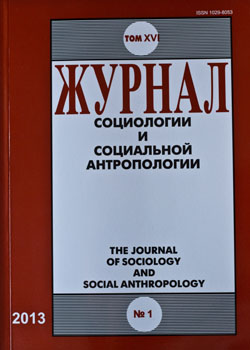Striptease as a Vocation: A Contribution to the Ethnography of Closed Cultural Scenes in Russian Megalopolises
Keywords:
cultural scenes, ethnography of striptease, Clifford Geertz, thick description, sociology of everyday life, cultural sociology
Abstract
In this paper, striptease is considered as a special cultural scene, as well as a specific craft appearing in Russia in the 1990s. The aim was to offer an ethnographical description of the everyday life of strip-tease dancers in Russian megalopolises, both women and men. The latter are considered here as a sort of “tribe” living in their own symbolic and instrumental universe. The methodological principle “from the native’s point of view”, which we used in our research, refers to the “interpretive anthropology” by C. Geertz, although we do suggest certain caution in treating his application of “thick description” concept formulated by G. Ryle. In the 1990s, in Russia, the transformation of moral values and institutions of the late-Soviet everyday life was effectively going on. Among other things, this process made it possible for strip-tease to emerge and to become established as an integral part of the mass entertainment industry. In the world of strip-tease, like in a drop of water, the new gender identities are reflected that are characteristic of various segments of modern Russian society, as well as the new forms of moral problematization and the new commercialization aspects concerned with the human body.
Published
2013-02-10
How to Cite
Kaploun, V., & Yukhnevich, E. (2013). Striptease as a Vocation: A Contribution to the Ethnography of Closed Cultural Scenes in Russian Megalopolises . ZHURNAL SOTSIOLOGII I SOTSIALNOY ANTROPOLOGII (The Journal of Sociology and Social Anthropology), 16(1), 124–147. Retrieved from http://jourssa.ru/jourssa/article/view/705
Section
Sociology of Professions

